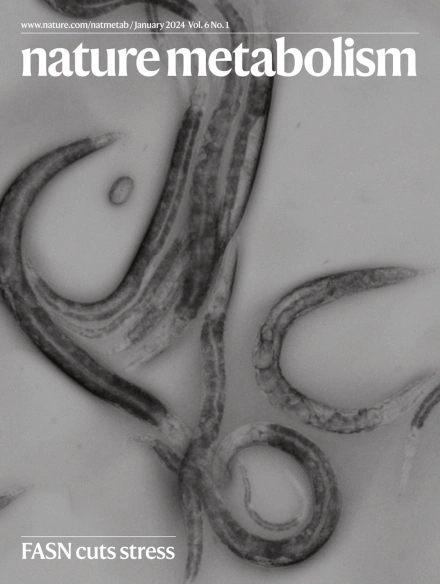细胞内代谢梯度决定了对外源性丙酮酸的依赖性
IF 20.8
1区 医学
Q1 ENDOCRINOLOGY & METABOLISM
引用次数: 0
摘要
在发育转变过程中,细胞经常重塑代谢网络,包括改变对葡萄糖和谷氨酰胺等代谢物的依赖,以促进细胞内代谢途径。在这里,我们使用胚胎干(ES)细胞作为模型系统来了解细胞内代谢网络的变化是如何影响对外源营养物质的依赖的。我们发现多能性初始基态的胚胎干细胞通过单羧酸转运体MCT1增加对外源性丙酮酸的摄取和依赖。初始胚胎干细胞依赖外源性丙酮酸,即使其他丙酮酸来源(葡萄糖、乳酸)充足。初始胚胎干细胞的丙酮酸依赖是其线粒体丙酮酸消耗升高的结果,其代价是细胞内NAD+再生。事实上,在一系列细胞类型中,线粒体丙酮酸消耗的增加足以推动对细胞外丙酮酸的需求。因此,恢复细胞质内NAD+再生可以使初始胚胎干细胞在不同的营养微环境中耐受丙酮酸的消耗。总之,这些数据表明细胞内代谢梯度决定了外源性丙酮酸的摄取和依赖,并突出了线粒体丙酮酸代谢作为初始ES细胞的代谢脆弱性。本文章由计算机程序翻译,如有差异,请以英文原文为准。


Intracellular metabolic gradients dictate dependence on exogenous pyruvate
During developmental transitions, cells frequently remodel metabolic networks, including changing reliance on metabolites such as glucose and glutamine to fuel intracellular metabolic pathways. Here we used embryonic stem (ES) cells as a model system to understand how changes in intracellular metabolic networks that characterize cell state transitions affect reliance on exogenous nutrients. We find that ES cells in the naive ground state of pluripotency increase uptake and reliance on exogenous pyruvate through the monocarboxylate transporter MCT1. Naive ES cells, but not their more committed counterparts, rely on exogenous pyruvate even when other sources of pyruvate (glucose, lactate) are abundant. Pyruvate dependence in naive ES cells is a consequence of their elevated mitochondrial pyruvate consumption at the expense of cytosolic NAD+ regeneration. Indeed, across a range of cell types, increased mitochondrial pyruvate consumption is sufficient to drive demand for extracellular pyruvate. Accordingly, restoring cytosolic NAD+ regeneration allows naive ES cells to tolerate pyruvate depletion in diverse nutrient microenvironments. Together, these data demonstrate that intracellular metabolic gradients dictate uptake and reliance on exogenous pyruvate and highlight mitochondrial pyruvate metabolism as a metabolic vulnerability of naive ES cells. Jackson et al. provide insight into how metabolic adaptations that accompany cell state transitions drive reliance on exogenous nutrient availability, focusing on pyruvate as a key metabolite in central carbon metabolism.
求助全文
通过发布文献求助,成功后即可免费获取论文全文。
去求助
来源期刊

Nature metabolism
ENDOCRINOLOGY & METABOLISM-
CiteScore
27.50
自引率
2.40%
发文量
170
期刊介绍:
Nature Metabolism is a peer-reviewed scientific journal that covers a broad range of topics in metabolism research. It aims to advance the understanding of metabolic and homeostatic processes at a cellular and physiological level. The journal publishes research from various fields, including fundamental cell biology, basic biomedical and translational research, and integrative physiology. It focuses on how cellular metabolism affects cellular function, the physiology and homeostasis of organs and tissues, and the regulation of organismal energy homeostasis. It also investigates the molecular pathophysiology of metabolic diseases such as diabetes and obesity, as well as their treatment. Nature Metabolism follows the standards of other Nature-branded journals, with a dedicated team of professional editors, rigorous peer-review process, high standards of copy-editing and production, swift publication, and editorial independence. The journal has a high impact factor, has a certain influence in the international area, and is deeply concerned and cited by the majority of scholars.
 求助内容:
求助内容: 应助结果提醒方式:
应助结果提醒方式:


